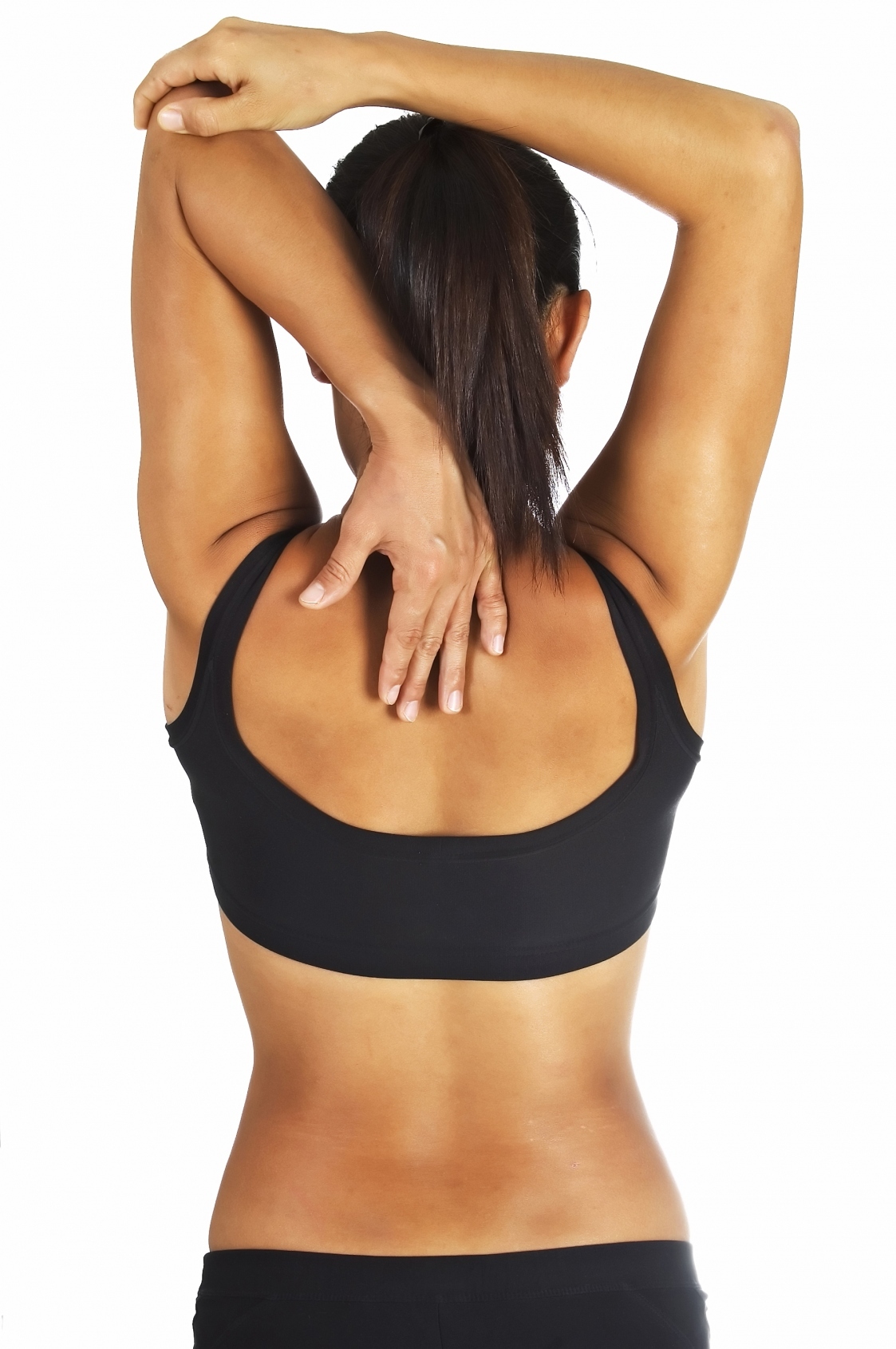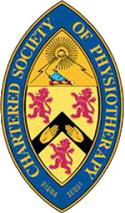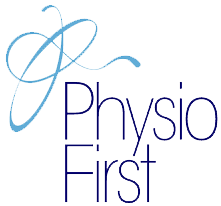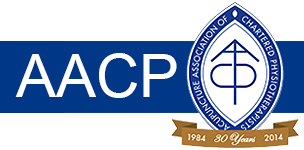Treatments
Mobilisations
Joint and soft tissue mobilisation techniques can be effective in reducing pain, improving posture and helping to restore normal movement through improving range availability of the joint, soft tissue stretch and the breaking down of unwanted scar tissue. The technique involves using oscillatory techniques over the dysfunctional joint, which are graded by the therapist, according to the stage of healing and the desired effect. Mobilisations can also be performed during guided active movement to further enhance effectiveness of treatment.
Stretches

Muscles don’t work in isolation, but sequence during activity to achieve pain-free movement that is of optimum quality and efficiency. However, prolonged poor posture, overuse, injuries, repetitive or excessive strain and weakness can all contribute to developing a muscle imbalance as a result of shortened or excess muscle length. Continuation can lead to changes in joint alignment, altered loading of the tissue and excess stress, which can cause strains, sprains, spasms, tendinopathies and therefore pain.
Stretching aims to alter the length of your muscles and tendons to re-establish optimum range and balance, therefore improving the efficiency and strength of the contraction as well as joint range of movement. Your physiotherapist will undertake stretches with you using a variety of techniques including passive stretching, Proprioceptive Neuromuscular Facilitation (PNF), Muscle Energy Techniques (MET) or reciprocal inhibition and will also guide a programme for you to continue stretches at home. Overall, this can improve flexibility, improve blood flow and nutrition to the muscle, improve posture, reduce pain and improve your performance in sports and activities.
Muscle energy techniques or Proprioceptive Neuromuscular Facilitation stretches are used to lengthen muscles through a hold and relax muscle contraction technique, this generally requires the assistance of your therapist and is widely used by athletes to improve range of movement in a joint both before and after sport to improve performance and reduce risk of injury.
Manipulations
Manipulations are a manual technique that involves applying force in a quick motion at the end of joint range to release pressure and break down scar tissue. The technique is often followed by a ‘click’ or ‘pop’ sound known as cavitation and can provide immediate improvements in pain and range of movement. Spinal joints are the most common areas treated with this technique; however, they can be effective with other joints. This technique is not appropriate for everyone and therefore your therapist will conduct a full assessment and determine what treatment techniques are suitable and what you should expect.
Most commonly spinal joints are those that we may choose to treat with manipulation, although these treatment techniques can be used with other joints.
Ultrasound
Therapeutic ultrasound is a form of electrotherapy using sound waves to induce mechanical vibration and oscillation within tissues and cells. The thermal and non-thermal therapeutic effects include promoting efficiency of inflammation, tissue healing, tissue repair and pain relief. Ultrasound can be used at any stage in the process of tissue healing and repair and will be modulated by your therapist according to the desired effect and stage of your injury.
Taping
Taping using a variety of techniques and tape type such as zinc oxide, EAB (elastic adhesive bandage) and Kinesiology-tape (K-tape) can have a range of benefits. Taping can be very effective in aiding restoration of normal movement through facilitating drainage of swelling, improving joint stability, reducing pain, facilitating improved muscle function and offloading painful muscles. K-tape comes in a variety of colours and has the advantage of allowing movement, whilst providing support and proprioceptive feedback to the brain with the additional benefit of maintaining placement when showering/bathing or swimming.
Massage
Massage is a manual technique involving mobilisation of the skin, connective and soft tissue such as fascia, muscles, tendons and ligaments. Application is undertaken using a variety of pressures and techniques to improve circulation and oxygen flow to the tissues, promote the movement of swelling and release tension. Other physiological benefits include the release of endorphins and reduction in the production of the stress hormone, cortisol. Overall, the aim is to relax the muscles, improve flexibility, reduce pain, improve joint range, restore normal movement and accelerate recovery.
Myofascial release
Myofascial release is a form of manual therapy aimed at reducing pain which arises from the kinetic chain of connective tissue that support, wrap and connect your muscles. The specialised technique focuses on application of continuous pressure into areas of muscle tension or restriction with the aim to improve blood flow and release tension. This technique is effective for alleviating pain, improving flexibility and restoring normal movement of the muscles and joints and is often utilised by our therapists in the management of back pain and plantar fasciitis to name a few.
Acupuncture
Acupuncture is a form of ancient Chinese medicine developed over 5000 years ago and involves the insertion of needles into the skin at specific locations in ‘energy’ channels known as meridians. The traditional theory is based on restoring and balancing the flow of energy or ‘Qi’ throughout the body in order to relieve the symptoms of pain or illness, which are thought to be present due to a blockage of Qi. Western theories are based on scientific research, which has shown acupuncture to stimulate the release of natural pain-relieving chemicals such as endorphins. Acupuncture is used to treat many conditions and is recognised by the National Institute for Clinical Effectiveness (NICE) for the management of chronic pain conditions including back pain and headaches. Acupuncture can also be effective in the management of other musculoskeletal conditions affecting the joints and muscles such as whiplash, shoulder pain and tendinopathies, as well as post-operative pain.
Interferential
Interferential was developed in the 1950s and is a form of electrotherapy using low frequency electrical currents to reduce the sensation of pain. Electrodes are placed on your skin in the area of pain and a medium, alternating electrical current is passed between the electrodes. The effect is to stimulate the sensory neurones, which produces a light tingling sensation and aids in reducing the sensation of pain through the stimulation of endorphin release. Other effects include an increase in local blood flow and muscle contraction, which aids in reducing swelling and muscle spasm.
Home Exercises
The evidence around the health benefits of exercise is overwhelming with strong scientific research demonstrating its positive effect on injury recovery, improving and managing long term conditions such as osteoarthritis, heart disease, diabetes, and reducing the risk of falls , as well as boosting mood, energy and sleep. Your physiotherapist will help guide an individual exercise programme, specific to your needs, to help manage the cause of your symptoms, improve pain and function and aid recovery in conjunction with your personal goals.
Pilates
Pilates is acknowledged worldwide as a form of low-impact exercise combining the focus of the mind with balance, posture and core stability. It was first developed by a German physical trainer called Jospeh Pilates in the early 20th century and is based on principles integrating breathing, isolated control, precision and flow. The aim is to strengthen, whilst improving flexibility and postural awareness and is widely used in rehabilitation.










